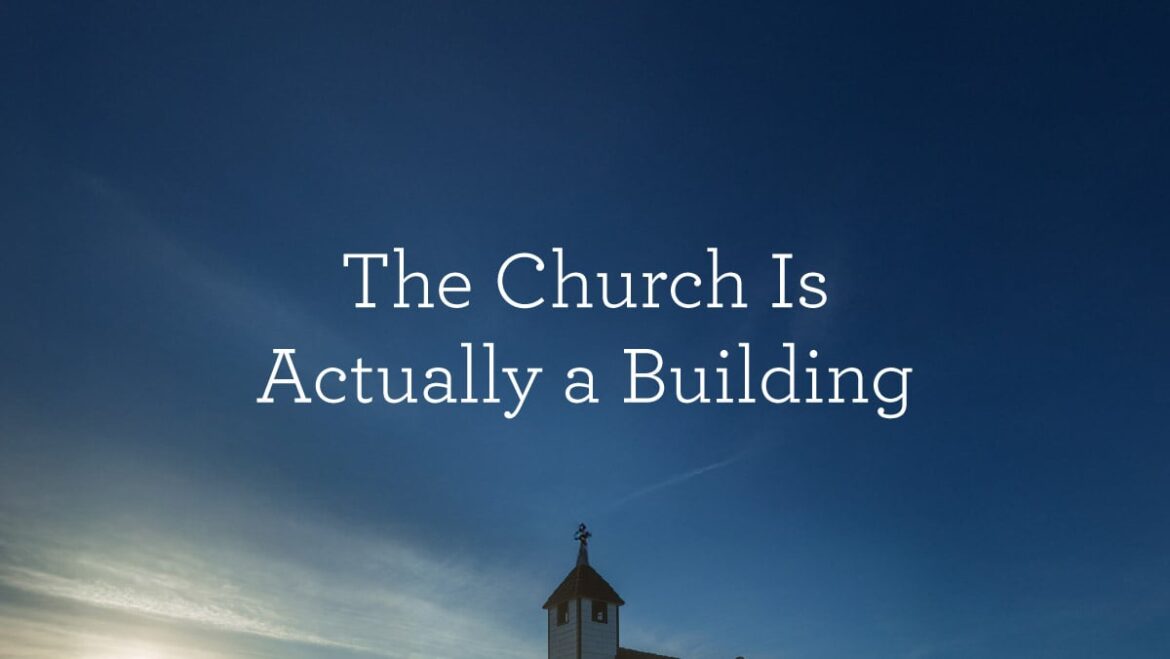Faithful pastors have often had to remind their flocks, “The church is not a building. The church is the people.” That is true and an important reminder. Yet it is also true that the New Testament frequently refers to the church as just that: a building—that is, that the people themselves are like a building on which God has broken ground and is constantly working.
One example is found in Ephesians 2:19–21, where Paul compares the church, freshly constituted of Jews and gentiles alike, to a temple under construction:
You are fellow citizens with the saints and members of the household of God, built on the foundation of the apostles and prophets, Christ Jesus himself being the cornerstone, in whom the whole structure, being joined together, grows into a holy temple in the Lord.
This picture suggests many helpful ideas, including the cohesion of the believers as they are built together and the progress they make as God continues the construction. Yet key to it all is the idea of a foundation.
“The Wise Man Built His House…”
Roman architects in the first century took immense care with foundations. They planned, if possible, to build on bedrock, and sometimes they would dig down twenty or thirty feet to get to the firmest base—and all that without modern construction equipment!
People may have wondered, “Why dig so far down? Why not stop at this level? After all, it looks pretty good.” But the master builder would say, “No, we dig down until we reach the most solid base. And when we have dug down, then we will build up.” Many Roman structures remain to this day—and of those that don’t, while the superstructure may be gone, the foundation often remains.
Jesus made use of this idea of a foundation as He concluded some of His sermons: “Everyone who comes to me and hears my words and does them, I will show you what he is like: he is like a man building a house, who dug deep and laid the foundation on the rock.” (Luke 6:47–48; see also Matt. 7:24). That house, that life, stands firm in inclement weather—in contrast to the house built “without a foundation” (Luke 6:49).
“How Firm a Foundation…”
Within his metaphor, Paul identifies the foundation on which the church is built: “the apostles and prophets”—that is, not on their personal authority but on their authority as heralds of the Gospel of the Lord Jesus Christ on the one hand and of the oracles of God on the other.
In practical terms, what Paul meant is this: that the church is built on the New Testament Scriptures, which contain the Spirit-empowered testimony of the apostles about Christ (John 14:26), and on the Old Testament Scriptures, which contain the God-given oracles of the prophets (2 Peter 1:21). “How firm a foundation, ye saints of the Lord,” says the hymn, “is laid for your faith in His excellent Word!” In a Christian church, the Bible is the foundation of all our life and all our practice. (Importantly, the church is built upon the foundation of the Bible; it is not a foundation alongside the Bible.)
When we grasp that, we will realize that we can’t go fiddling with the foundation. Once the building begins to go up, we’ve had it as far as the foundations are concerned. And as God’s holy temple, the church, begins to climb into the sky, the foundations are not to be to be added to or taken from—as so many have done, wittingly or unwittingly, over the years.
“The Church’s One Foundation…”
If the apostles and the prophets are the foundation, says Paul, then the Lord Jesus Christ is the cornerstone. The cornerstone was a part of the foundation, at the intersection of the first two walls. It was the first stone placed, and its lie determined the placement of every stone that followed.
The Scriptures are the foundation of the church, but it is ultimately Christ about whom they speak (John 5:39 ). We depend on the Scriptures because Christ speaks in them through His apostles and prophets. So strong is this dependence that in a slightly different context, Paul can say, “No one can lay a foundation other than that which is laid, which is Jesus Christ” (1 Cor. 3:11). As another hymn puts it, “The Church’s one foundation is Jesus Christ her Lord.”
This, of course, is the point that Jesus Himself made in His own parable. Who is the one building on the rock? “Everyone who comes to me and hears my words and does them.” To be part of the temple of God is to give Christ Himself our presence, our attention, and our obedience.
“When We’ve Been There Ten Thousand Years…”
The temple in Jerusalem didn’t last. It was destroyed—twice, in fact. So many buildings of the Roman era have fallen or will fall. But the temple that God is building His church into will stand forever. And as the hymn writer puts it,
When we’ve been there ten thousand years,
Bright shining as the sun,
We’ve no less days to sing God’s praise
Than when we’d first begun.
The temple God is building will stand forever, to His glory and to the good of all who are built into it, resting on the foundation of His Word, built from the cornerstone of Christ. Have you become a part of it yet?
This article was adapted from the sermon “The Building of God” by Alistair Begg.



